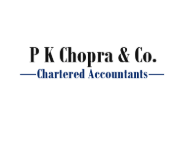Inventories Audit
Inventories are tangible property held for sale in the ordinary course of business, or in the process of production for such sale, or for consumption in the production of goods or services for sale, including maintenance supplies, consumable stores and spare parts meant for replacement in the normal course. Inventories normally comprise raw materials including components, work-in-process, finished goods including by-products, maintenance supplies, stores and spare parts, and loose tools.
Inventories normally constitute a significant portion of the total assets, particularly in the case of manufacturing and trading entities as well as some service rendering entities. Audit of inventories, therefore, assumes special importance.
ICAI Guidance Note on Audit of Inventories
The Guidance Note deals with procedures of the auditor in respect of audit of inventories. It outlines the peculiar features of inventories, which impact the audit procedures.
The following is a gist of the important aspects of audit of inventories covered by the Guidance Note:
- Internal Control Evaluation: It involves segregation of incompatible functions, standard form for recording movement of inventory, cross checking of data generated by different departments. The auditor should also review specific controls over receipts, issues, physical inventories, and inventory records.
- Verification: It is the management’s responsibility for physical verification. In carrying out an audit of inventories, the auditor is particularly concerned with obtaining sufficient appropriate audit evidence to corroborate the management’s assertions regarding the following:
Verification of inventories may be carried out by employing the following procedures:
- Examination of Records: The extent of examination of records by an auditor with reference to the relevant basic documents (e.g., goods received notes, inspection reports, material issue notes, bin cards, etc.) depends upon the facts and circumstances of each case. The auditor may come across cases where the entity does not maintain detailed stock records other than the basic records relating to purchases and sales. In such situations, the auditor would have to suitably extend the extent of application of the audit procedures.
- Attendance at Stock Taking: The need for auditor’s attendance at stock taking would depend upon his assessment of the efficacy of relevant internal control procedures. The procedures concerning the auditor’s attendance at stock-taking depend upon the method of stock-taking followed by the entity (i.e. Periodic or continuous method). The auditor should observe the procedure of physical verification adopted by the stock-taking personnel to ensure that the instructions issued in this behalf are being actually followed. He should also examine whether the entity has instituted appropriate cut-off procedures.
- Confirmation from Third Parties: Where significant stocks of the entity are held by third parties, the auditor should examine that the third parties are not such with whom it is not proper that the stocks of the entity are held. The auditor should also directly obtain from the third parties written confirmation of the stocks held.
- Examination of Valuation and Disclosures: The auditor should satisfy himself that the valuation of inventories is in accordance with the normally accepted accounting principles and is on the same basis as in the preceding year. The generally accepted accounting principles involved in the valuation of most types of inventories are dealt with in Accounting Standard (AS) 2, “Valuation of Inventories”, issued by ICAI. Also, he should examine the evidence supporting the assessment of net realizable value. The auditor should satisfy himself that the inventories have been disclosed properly in the financial statements.
- Analytical Review Procedures: The following analytical review procedures may often be helpful as a means of obtaining audit evidence regarding the various assertions relating to inventories:
(i) reconciliation of quantities of opening stocks, purchases, production, sales and closing stocks;
(ii) comparison of closing stock quantities and amounts with those of the previous year;
(iii) comparison of the relationship of current year stock quantities and amounts with the current year sales and purchases, comparison of the composition of the closing stock, comparison of significant ratios relating to inventories, etc.
- Work in Progress: the auditor has to carefully assess the stage of completion of the work-in-process for assessing the appropriateness of its valuation. For this purpose, the auditor may examine the production/costing records (e.g., cost sheets), hold discussions with the personnel concerned, and obtain expert opinion, where necessary.
- Management Representations: The auditor should obtain from the management of the entity, a written statement describing in detail, the location of inventories, methods and procedures of physical verification and valuation of inventories. However, it does not relieve the auditor of his responsibility for performing audit procedures to obtain sufficient appropriate audit evidence to form the basis for the expression of his opinion on the financial information.
- Documentation by the auditor: The auditor should maintain adequate working papers regarding audit of inventories. He should maintain on his audit file a summary of each inventory as also the details regarding the extent of his verification. The management representation letter concerning inventories should also be maintained on the audit file.
The nature, timing and extent of audit procedures to be performed is, however,
a matter of professional judgement of the auditor.
responsible for stock taking, illustrative letter of confirmation of inventories held by others, illustrative letter of confirmation of inventories held by the entity on behalf of others and an illustrative management representation letter for inventories.
About the Author
 Author is Ms. Gloria Jaggi, an expert with more than 25 years of experience in Internal Control, Statutory Compliance, Finance and Professional Consulting. She is also the CEO of P.K Chopra & Co. Chartered Accountants, a Chartered Accountancy firm established in the year 1963 with its head office at New Delhi.
Author is Ms. Gloria Jaggi, an expert with more than 25 years of experience in Internal Control, Statutory Compliance, Finance and Professional Consulting. She is also the CEO of P.K Chopra & Co. Chartered Accountants, a Chartered Accountancy firm established in the year 1963 with its head office at New Delhi.






